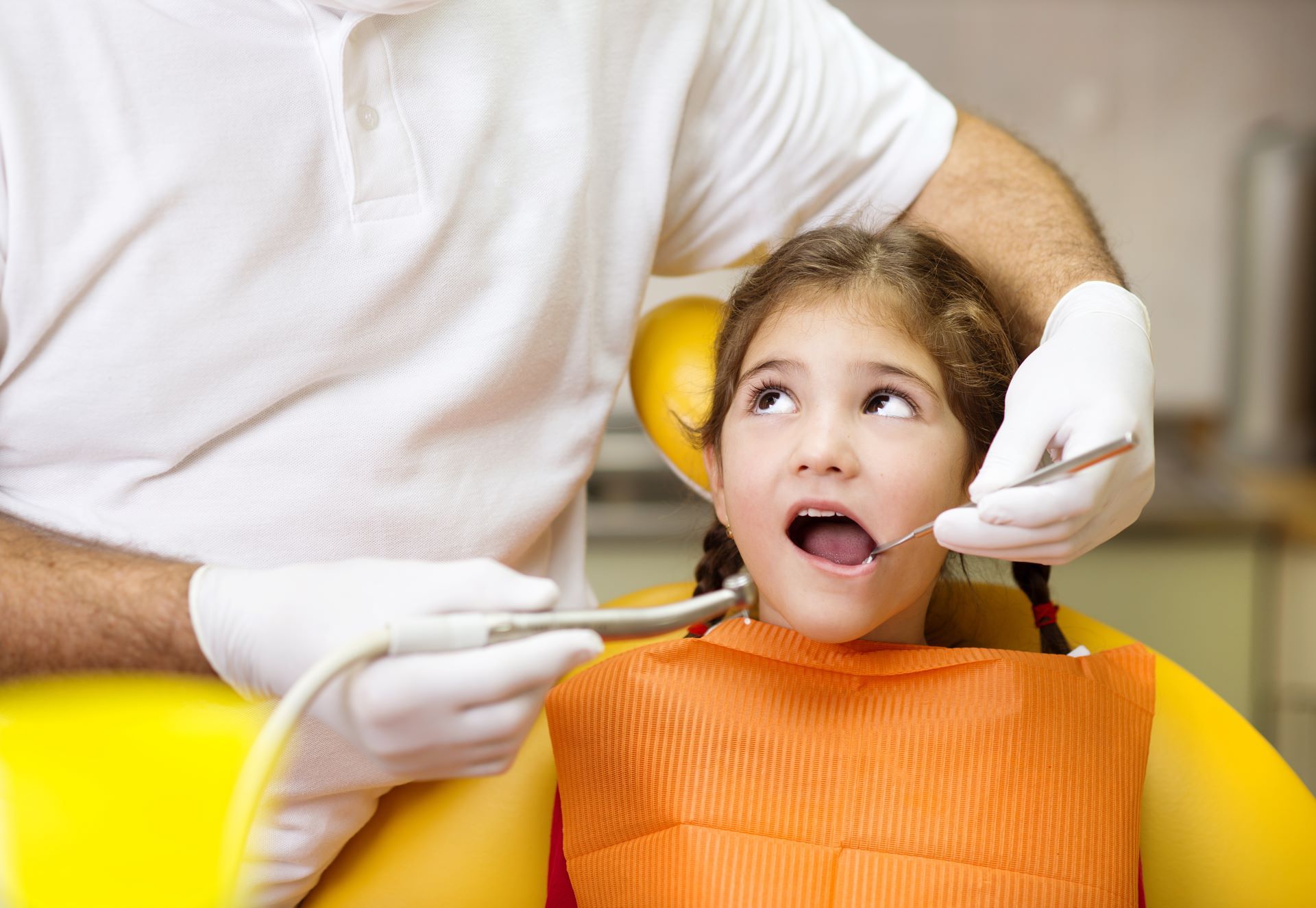Is It Normal for Baby Teeth to Come in Crooked?
If you're a parent in Kansas City noticing your child’s baby teeth coming in at odd angles, you're not alone. One of the most common concerns is: “Why are my child’s teeth coming in crooked?” The good news is that in most cases, crooked baby teeth are completely normal and nothing to worry about. Many kids experience some irregular alignment early on, and it often straightens out naturally as their mouth grows.
Let’s take a closer look at what causes crooked baby teeth, when it’s considered part of normal development, and when it might be time to consult your pediatric dentist.

Why Baby Teeth Sometimes Look Crooked
The appearance of crooked baby teeth can be surprising—especially when your child’s first few teeth come in at odd angles. But this often has more to do with how their tiny mouths are growing than with anything being “wrong.”
Here are a few completely normal reasons baby teeth may come in looking crooked:
Jaw and tooth size mismatch
In early childhood, the jaw is still developing. There may not be quite enough room for the teeth to line up perfectly at first. As your child grows, their jaw makes space for those teeth to align better.
Eruption pattern
Teeth don’t always come in straight up and down. Sometimes, they twist or tilt their way into position. This can make them look crooked at first, but over time they often straighten out on their own.
Natural spacing
It’s actually healthy for baby teeth to have gaps between them. This spacing allows room for the larger adult teeth to emerge later. Slight misalignment or uneven spacing is usually not a cause for concern.
Early alignment issues often correct themselves with growth.
Common Causes of Crooked Baby Teeth
While mild crookedness is often part of normal development, several factors can influence how your child’s teeth come in:
Genetics
If one or both parents had crooked teeth, there’s a good chance your child may have similar traits. Genetics play a major role in jaw size, tooth size, and spacing.
Thumb-sucking or pacifier use
Extended thumb-sucking or pacifier habits, especially beyond age 2 to 3, can put pressure on developing teeth and influence their direction.
Tongue thrust
Some children push their tongue against their front teeth when swallowing or speaking. Over time, this can cause the front teeth to shift outward.
Early tooth loss
If your child loses a baby tooth too early—whether from injury or decay—other teeth may drift into the open space, causing misalignment.
Mouth breathing
Children who breathe mostly through their mouth (due to allergies, enlarged tonsils, etc.) may experience changes in facial development that impact tooth alignment.
When Crooked Teeth Are Usually No Concern
Most of the time, crooked baby teeth resolve naturally as more teeth come in and the mouth matures. Here's when parents can relax:
- Mild misalignment of one or two teeth
- Front teeth that flare outward but aren’t causing discomfort
- Gaps between teeth (this is often a good thing!)
- V-shape or overlapping in lower front teeth, especially under age 5
As long as your child is eating, speaking, and developing normally, these early alignment quirks are just part of the process.
When You Should See Your Pediatric Dentist
While most cases are harmless, some signs may indicate a need for closer evaluation. Schedule a visit with your pediatric dentist if you notice:
- Severe crowding that makes brushing difficult
- Visible bite problems, like an underbite or crossbite
- Teeth shifting significantly after premature tooth loss
- Persistent habits like thumb-sucking past age 4
- Speech difficulties that may be related to jaw or tongue position
Your dentist can evaluate whether the crookedness is likely to resolve on its own—or whether early treatment might help.
What Pediatric Dentists May Recommend
If intervention is needed, it’s usually gentle and preventive in nature. Pediatric dentists and orthodontists are trained to support proper development and create space when necessary.
Here are a few treatment options that might be considered:
Monitoring
In many cases, the best “treatment” is just careful observation. Regular checkups help us track jaw growth and tooth movement over time.
Habit counseling
If thumb-sucking or pacifier use is affecting alignment, we’ll help you and your child take small steps to stop the habit without stress.
Space maintainers
If a baby tooth is lost early, we may use a small appliance to keep that space open for the adult tooth to come in properly.
Interceptive orthodontics
In some cases, early orthodontic treatment (before all adult teeth come in) can guide growth and prevent more serious issues later.
Tips for Parents
If your child’s teeth are coming in crooked, you’re not alone—and you’re not powerless, either. Here’s how you can support healthy dental development at home:
Schedule dental visits early
We recommend bringing your child in by their first birthday or when the first tooth appears. This helps us spot any potential issues early.
Discourage prolonged thumb-sucking or pacifier use
Try to help your child stop these habits by age 2 to 3. We can provide gentle support if needed.
Focus on good brushing habits
Crooked teeth can be harder to clean. Help your child brush thoroughly and use flossers as needed.
Watch for changes after injury or early tooth loss
If your child has a fall or loses a tooth unexpectedly, let us know. We’ll make sure their smile stays on track.
Every Smile Develops Differently—And That’s OK
At Sweet Tooth Pediatric Dentistry & Orthodontics, we’ve seen thousands of growing smiles—and no two are exactly alike. Crooked baby teeth are usually just part of the journey. But we’re always here to offer guidance, reassurance, and support when you need it.
Worried about how your child’s teeth are coming in? Let’s take a look together.
We’ll help you understand what’s normal, what’s not, and what you can do to encourage a healthy, confident smile.
Schedule an appointment today at your nearest
Sweet Tooth location the Kansas City area.
Pediatric Dentistry
Schedule Appointment
Book your appointment at one of our Sweet Tooth locations today.
First Time Visit?
There is no need to fear, Sweet Tooth is here! Let us help you ease the worry that can come with visiting the dentist for the first time.
Accepting New Patients





